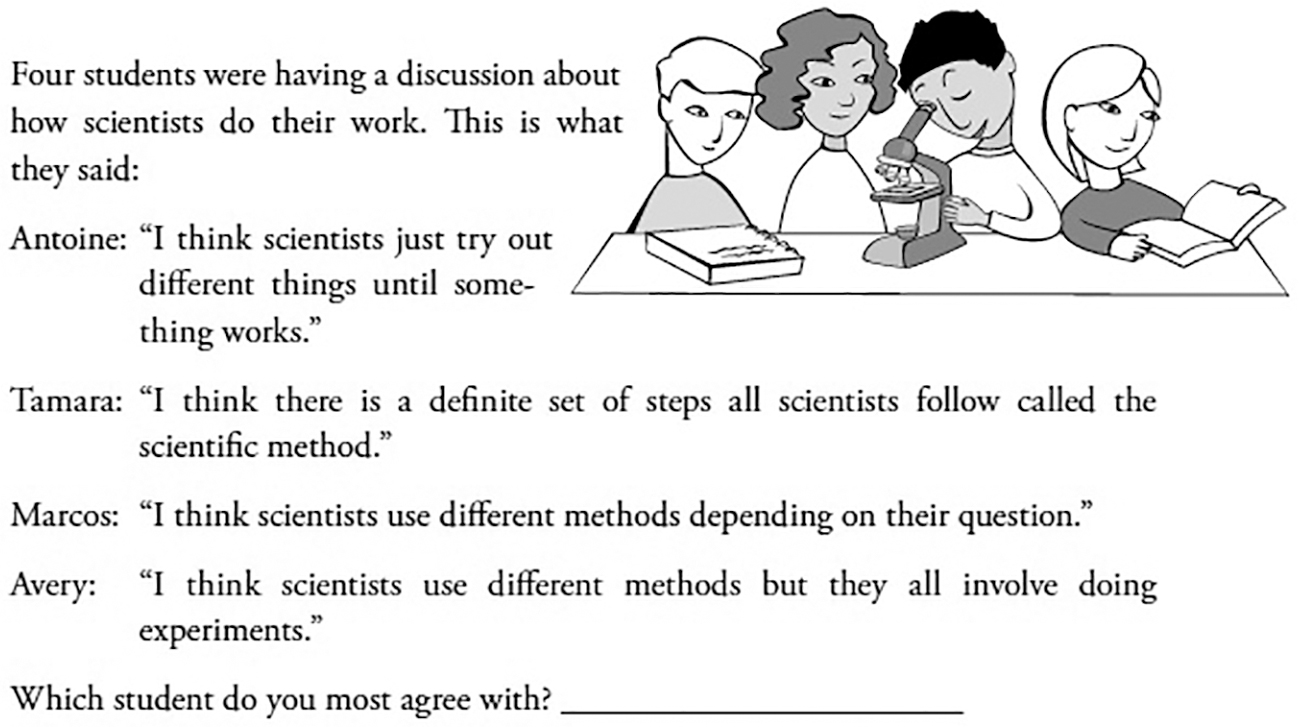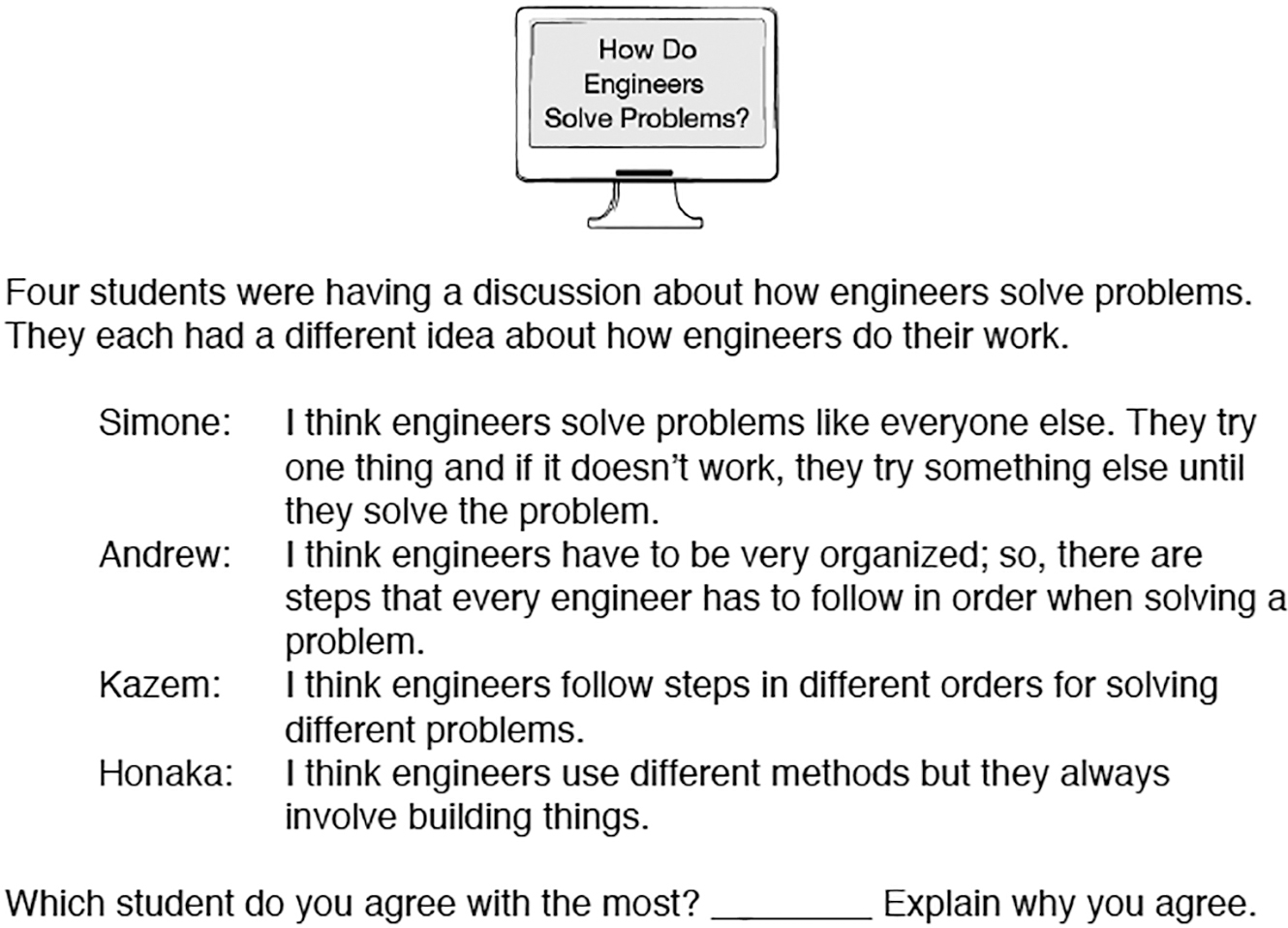Formative Assessment Probes
“Doing” Science vs. “Doing” Engineering
Science and Children—February 2020 (Volume 57, Issue 6)
By Page Keeley
In the September 2010 issue of Science and Children, my column featured the Doing Science probe that reveals how children think about the way scientists do their work (Figure 1; Keeley, Eberle, and Dorsey 2008). The column discussed how results from the probe are likely to reveal two common misunderstandings your students may have. The first is the belief that there is a rigid, step-by-step method (Tamara’s idea), which is often conveyed as a result of teachers requiring students to follow “the scientific method.” The second is the belief that scientists always do experiments (Avery’s response). This is often attributed to the overuse of the word experiment in our everyday language (Keeley 2010).

Since the release of A Framework for K–12 Science Education in 2012, there has been a significant shift toward the use of science and engineering practices that mirror the way scientists do their work (NRC 2012). The Framework states, “A focus on practices (in the plural) avoids the mistaken impression that there is one distinctive approach common to all science- a single ‘scientific method’…in reality, practicing scientists employ a broad spectrum of methods…” (NRC 2012 p. 44). Although students and teachers are now using the science and engineering practices, there are still students (and teachers) who think there is a definite, rigid set of steps that all scientists follow.
Today students are not only engaged in using the practices of science, they are also learning about and using the practices of engineering. Could similar misconceptions exist about how engineers do their work? To find out, we developed a similar formative assessment probe for Uncovering Student Ideas about Engineering and Technology: 32 Formative Assessment Probes (Keeley, Sneider, and Ravel 2020). Figure 2 shows a draft version of the How Do Engineers Solve Problems? probe (At the time this column was written, the book was in production). This probe is used to elicit students’ ideas about how engineers approach problem solving and design.

The best answer is Kazem’s idea: I think engineers follow steps in different orders in solving different problems. It is important for students to recognize that there is no one definite series of steps that engineers always follow. Although an Engineering Design Process (EDP) provides an overall framework, the order and total number of steps differ depending on the problem they are trying to solve.
This probe was field tested with grades 5, 7, 8, and high school. Interestingly many students, regardless of grade level, selected Andrew and their explanations show a similarity to the way they view “the scientific method.” For example, the three fifth-grade responses in Figure 3 reveal that students think there is a step-by-step process engineers use and that they follow these steps in a definite order.
The fourth answer choice (Honaka) is similar to the Doing Science probe where students who select Avery understand that science is done in different ways, yet they think all scientists do experiments. The fifth-grade students who selected Honaka in the How Do Engineers Solve Problems? probe show an understanding that engineers use varied steps in different orders but think engineering always involves building things (Figure 5).

Formative assessment always involves a feedback loop that helps the teacher make informed instructional decisions. Feedback gathered from student responses when using this probe reveals that teachers need to be careful in their language when engaging students in engineering design. Avoid referring to “the” engineering design process and use “an” engineering design process. Be explicit in pointing out that the graphic depicting an engineering design process does not mean that all steps are always followed and that steps are not always followed in the same order.
Two decades ago we realized that the idea that there is a common series of steps that is followed by all scientists is likely to be the most common myth of science (McComas 1996). Today, examine your students’ ideas about engineering design and make formative decisions that will ensure that a similar myth about engineering does not get perpetuated in your classroom.
Assessment Pedagogy Teaching Strategies Middle School Elementary Grade 5


